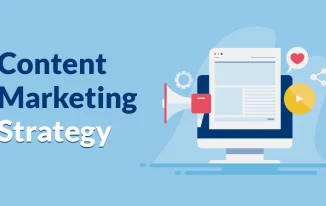Direct to consumer marketing is the promotion of a product or a service from the seller directly to the consumer, without using intermediate advertising channels such as television and radio commercials or public displays.
This marketing is especially beneficial for small and medium-sized enterprises with minimal brand awareness and limited advertising budgets.
The roots of direct to consumer marketing date back to product catalogs, among the first channels of direct-to-consumer marketing.
One of the first published catalogs was a list of books sent to wealthy patrons in Venice in the fifteenth century. During the 19th and 20th centuries, peddlers and door-to-door salespeople contributed to the industry's growth.
Technological advancements and the rise of the Internet have increased direct marketing possibilities in previously inconceivable ways. Consumers may expect more convenience with expanding the web, mobile, and cloud technologies. Consumers today seek a more seamless experience than ever before.
Wholesale producers have limited control over their products sold via local distributors. They are at the mercy of the distributors to guarantee that the consumer is happy and content once they have made their purchase.
Companies that sell directly to consumers may envision how their customers' journeys should unfold and then carry out the actions necessary to make that vision a reality.
However, selling directly to clients may not always result in a better customer experience. If a company lacks the necessary understanding, procedures, and culture, it will be unable to create a smooth customer experience.
To guarantee that any direct sales activity enhances the customer experience, an understanding of the end consumer is necessary.
Direct to Consumer Marketing Tactics
In 2020, direct-to-consumer marketing’s full potential was displayed. As brick-and-mortar businesses shuttered in the COVID-19 pandemic and e-commerce websites were delayed due to excessive traffic, consumers started to purchase straight from companies' websites. Due to this advancement, Direct to consumer marketing has become more popular.
The primary benefit of direct to consumer marketing is that it enables businesses to develop closer ties with their consumers and enhance client loyalty. Customers, on the other side, benefit from a more tailored brand experience and offerings.
Filling the gaps in Personalization
One factor that businesses may overlook when formulating a Direct to consumer marketing is that a few functions and processes are required to implement Direct to consumer marketing tactics. Consumers would not visit if they cannot locate a business, or if they come and have a negative shopping experience, they will be reluctant to return.
To overcome these stumbling blocks, businesses should assess their functionalities in the following areas before embarking on any large direct-to-consumer initiatives and create a personalized consumer experience.
Creating an online presence entails purchasing a domain name and developing and launching a website.
Personalization is a direct-to-consumer digital marketing tactic that allows businesses to build personalized experiences for the target audience. It entails leveraging data to personalize marketing messages and content, such as consumer preferences and purchase history.
Personalization may be a powerful tool for increasing client engagement and conversions. However, businesses should be careful not to over-personalize the material. Otherwise, they may come out as weird or invasive.
Digital marketing, including email, sponsored search, and content development (e.g., blogs, videos, and images), will be critical in attracting consumers. That additional information about the product or brand is directed to an online shop simplifying their route to purchase.
Returns are an unavoidable aspect of every online retail business. Issues may arise in terms of consumer loss. Therefore manufacturers must make it easy for customers not just to return products but also to process those returns for them to be resold and put back on the shelf.
Marketing via E-mails
Email marketing is a very effective digital marketing approach for cultivating connections with a business's present and future consumers. It entails delivering emails via targeted email campaigns such as newsletters, special promotional offers, and autoresponders to keep customers informed about the newest products or services launched by a business.
Email marketing may be a powerful tool for staying in contact with prospective consumers and converting them into paying consumers. However, ensuring that the emails are well-composed and relevant to the intended audience is critical.
Otherwise, a business may risk becoming spam or irrelevant to the prospective consumer, resulting in the consumers unsubscribing from the email list.
Influencer and Social-Media Marketing
Social media marketing is another effective direct-to-consumer marketing approach businesses may use to connect with present and potential consumers.
It entails planning, developing, and publishing compelling engagement material on social media platforms such as Facebook, Twitter, and Instagram, via different mediums such as blog entries, infographics, photos, and videos.
Social media marketing can be a very powerful tool for connecting prospects and consumers. However, ensuring that the published content is relevant, attractive, and engaging is critical.
Otherwise, businesses may risk seeming spammy or irrelevant, which can have adverse results and may result in people unsubscribing or unfollowing the social media accounts.
Businesses may utilize these social media platforms to execute influencer marketing campaigns and develop and distribute compelling content. An example is working with influencers such as bloggers, vloggers, and social media superstars to promote a product or service.
Influencer marketing may be a powerful tool for reaching a broader audience and generating more prospective consumers. However, businesses must ensure they deal with relevant influencers to the target audience. Otherwise, they risk squandering time and money on an unproductive campaign.
Conclusion
Consumers nowadays are significantly more demanding than they've ever been. Consumers have access to apparently unlimited amounts of information to influence their shopping choices and expect to conduct those purchases across numerous platforms.
They are more inclined to switch providers owing to poor customer service, lengthy delivery times, or rigid return policies.
To fulfill these customer needs, brand producers must reach out to individual consumers and learn more about their preferences, opinions, and expectations, rather than relying on long-established retail channels.
Whether it is merely depending on third-party platforms or building a branded online shop, adopting a D2C strategy is becoming more important for maintaining a competitive advantage.
Despite their market dominance, the Online stores and Walmarts of the world are helpless to stop a brand that provides a curated and elevated experience to customers, which iterates and steadily improves over time.





